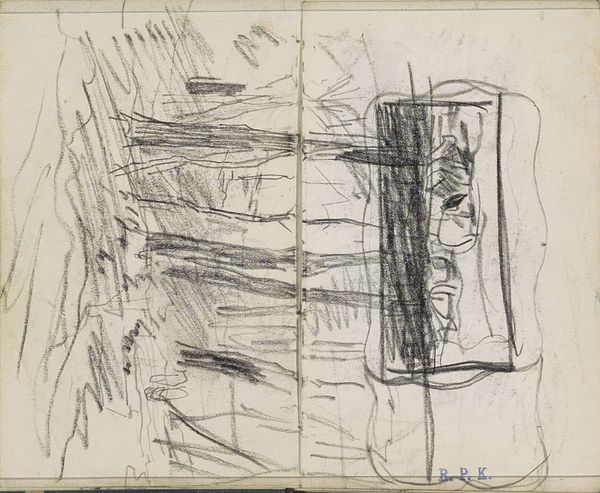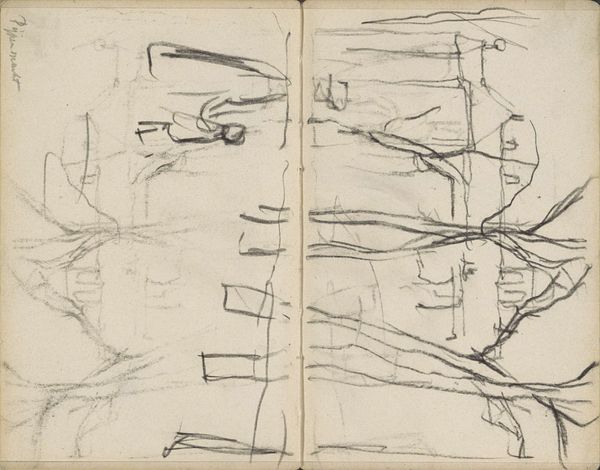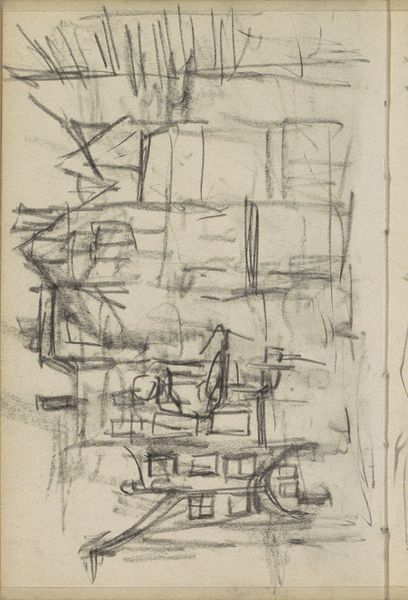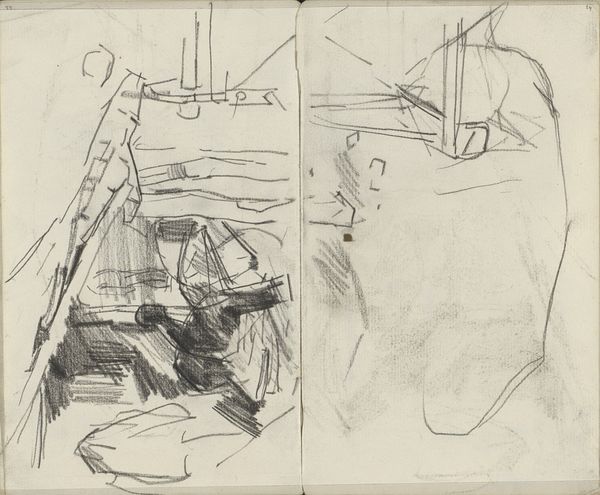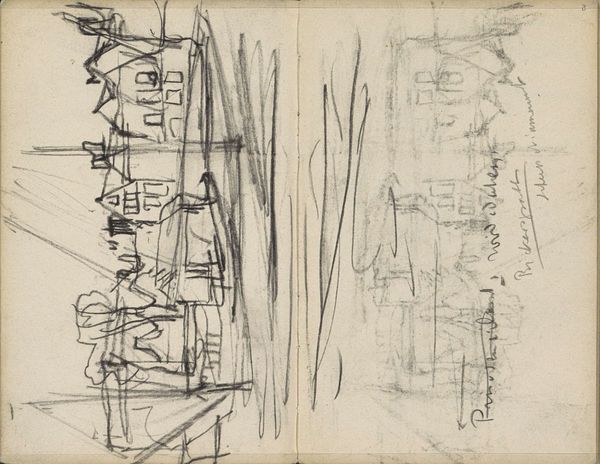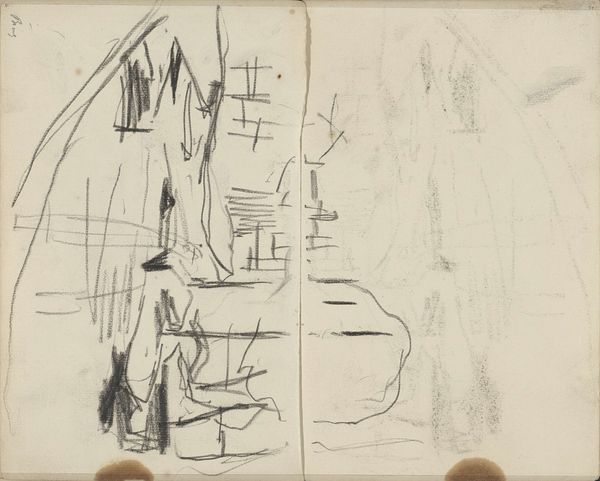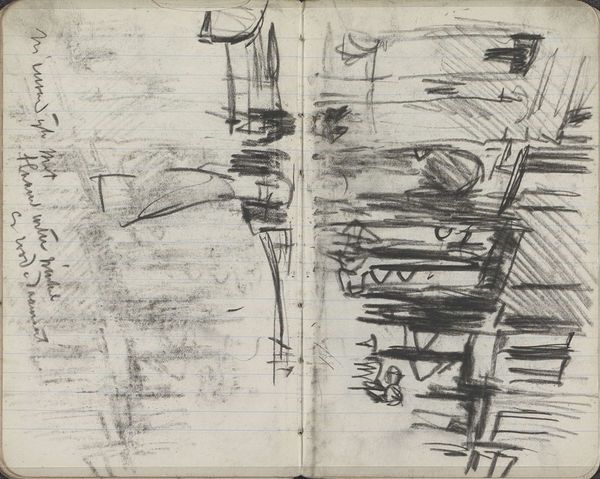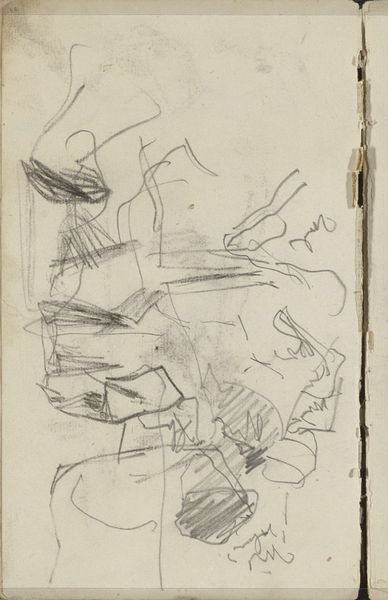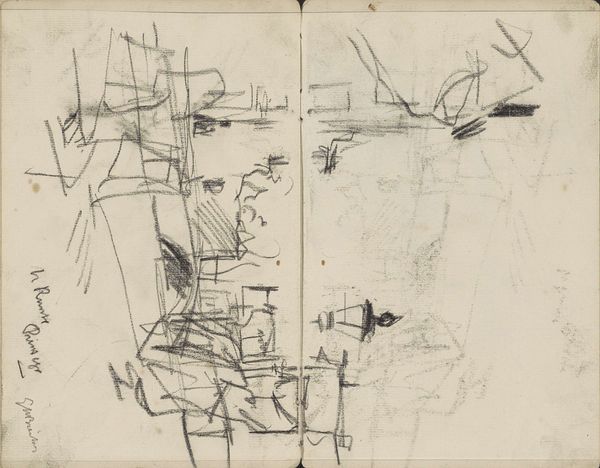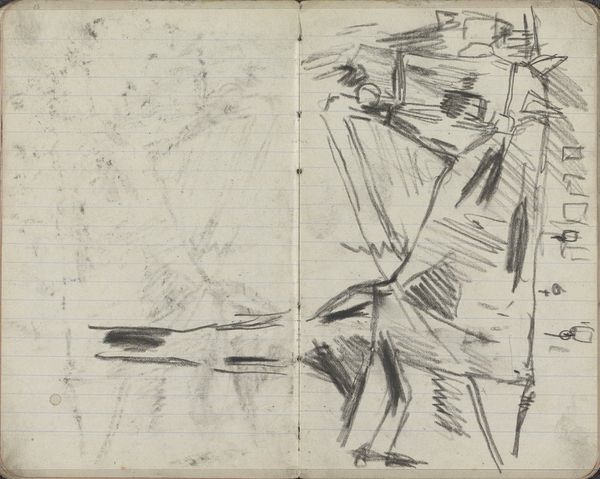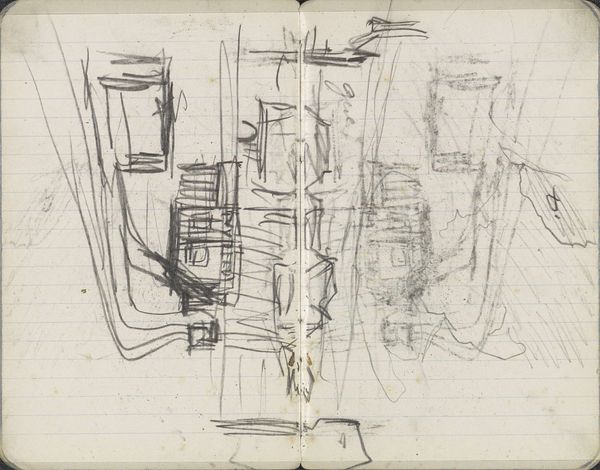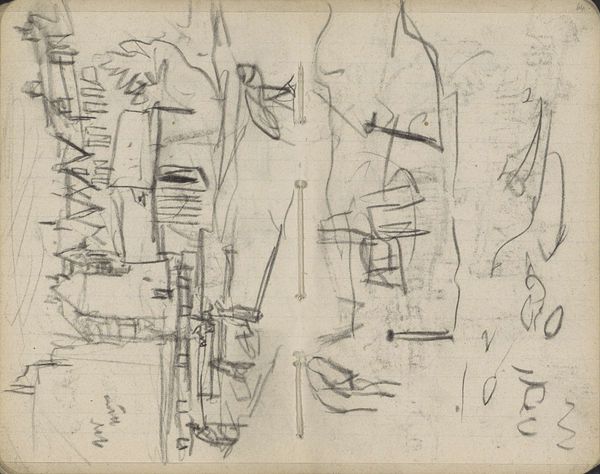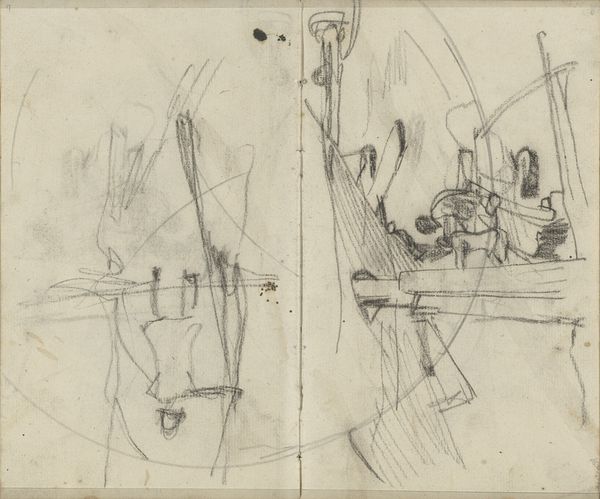
drawing, pencil, graphite
#
drawing
#
quirky sketch
#
impressionism
#
sketch book
#
incomplete sketchy
#
personal sketchbook
#
idea generation sketch
#
sketchwork
#
sketch
#
pencil
#
graphite
#
sketchbook drawing
#
cityscape
#
storyboard and sketchbook work
#
sketchbook art
#
initial sketch
Copyright: Rijks Museum: Open Domain
Curator: Let’s turn our attention to George Hendrik Breitner’s “Figuur bij gebouwen,” a graphite and pencil drawing created between 1880 and 1882. It resides here at the Rijksmuseum. Editor: Well, my immediate reaction is one of energetic chaos. The lines are so hurried and overlapping; it looks as though Breitner was trying to capture something incredibly fleeting. Curator: That’s a perceptive observation. This sketch offers a window into Breitner's artistic process during a pivotal period. Consider how his work documenting Amsterdam positioned him in the burgeoning social realism movement, striving to capture the pulse of urban life without idealization. This sketch seems like an early notation for a larger composition, a document that unveils some of the process of construction. Editor: Yes, that immediacy is captivating. Look at the stark contrast created by the bold strokes defining the buildings and the more delicate lines indicating figures and ephemeral details. I can observe the tonal variation in the different densities of graphite that helps articulate volume and structure even with a minimalist technique. The figure becomes subordinate to the architectonic landscape in its form and materiality. Curator: It reminds us that Breitner's art was embedded in the rapidly changing social environment of the Netherlands. He was not just depicting a scene, but responding to the profound transformations in urban development and everyday existence. His social and political views were complex and embedded in his artwork: notice, the “forgotten” urban figures placed between solid, almost imposing structures? Editor: Absolutely. One notices his mastery of line. See how it's not just about representation, but about suggesting movement, light, and shadow? The density and direction create forms with little descriptive elements—perhaps these buildings could even be interpreted as psychological masses. I wonder how much of his method depended on visual interpretation instead of planned perspective. Curator: It certainly makes one ponder the broader context. Breitner was very engaged in artistic circles where debates raged about the artist's role in society. This piece serves as evidence about the intellectual discourses in late 19th-century Holland. Editor: I see what you mean. These sketches reveal the artist's hand and mind working in tandem, grappling with form, composition, and expression. It reminds one of raw artistic impulse, before refinement and polish obscure the source of inspiration. Curator: Precisely! Looking closely at Breitner's preliminary sketch, we're given a rare, intimate glimpse into the socio-political awareness of a dutch master at work. Editor: Indeed, it's the union between technical facility and representational possibility what makes it remarkable.
Comments
No comments
Be the first to comment and join the conversation on the ultimate creative platform.

